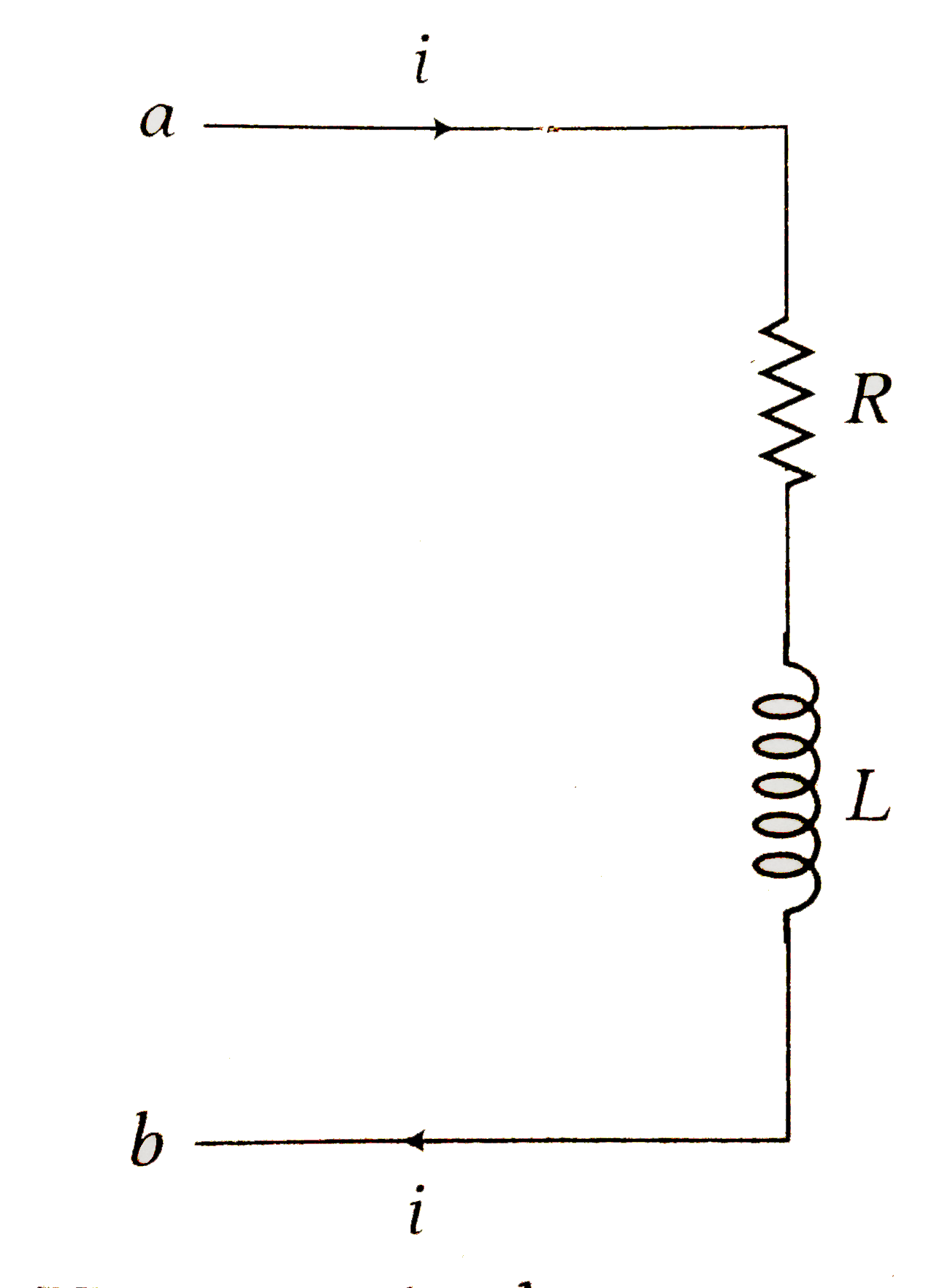AB is a part of circuit. Find the potential difference VA−VB if
a. current I=2A and is constant,
b. current i=2A and is increasing at the rate of 1As−1,
c. current i=2A and is decreasing at the rate 1As−1,

Applying KVL from A to B,

VA−1didt−5−2i=VB
a. Put i=2,didt=0,VA−5−4=VB
∴VA−VB=9V
b. Put i=2,didt=1
VA−5−4=VB
or VA−VB=10V
Put i=2,didt=−1
VA+1−5−2×2=VB
VA=8V
Topper's Solved these Questions
- INDUCTANCEBook:CENGAGE PHYSICSChapter:INDUCTANCEExercise:Exercises (subjective)
Explore 7 Videos
- INDUCTANCEBook:CENGAGE PHYSICSChapter:INDUCTANCEExercise:Exercises (single Correct )
Explore 65 Videos
- INDUCTANCEBook:CENGAGE PHYSICSChapter:INDUCTANCEExercise:Solved Examples
Explore 3 Videos
- HEATING EFFECT OF CURRENTBook:CENGAGE PHYSICSChapter:HEATING EFFECT OF CURRENTExercise:Thermal Power in Resistance Connected in Circuit
Explore 28 Videos
- KINETIC THEORYBook:CENGAGE PHYSICSChapter:KINETIC THEORYExercise:Question Bank
Explore 31 Videos
Similar Questions
Knowledge Check
The network shown in the figure is a part of complete circuit. What is the potential difference VB−VA when the current I is 5A and is decreasing at a rate of 103A/s?
 A5VB10VC15VD20V
A5VB10VC15VD20VIn the part of a circuit branch shown in figure-5.304 the potential difference Vab at t=1s is:
 A30VB−30VC20VD−20V
A30VB−30VC20VD−20V
If current is increases with rate of 2Ampsec, then find VA−VBA2VB4VC8VD6V
In the circuit (Fig.) what is potential difference VB−VA (in V) when current I is 5A and is decreasing at the rate of 103As−1

View SolutionThe network shown in Fig. is a part of a complete circuit.What is the potential difference VB−VA when the current I is 5A and is decreasing at a rate of 102(A/s) ?

View SolutionThe network shows in Fig is part of a complate circuit. If at a certain instant the current (I) is 5A, and is decreasing at a rate of 105As−1 then VB−VA=−V.

View SolutionIf I=5A and decreasing at a rate of 102(A/sec) , then VB−VA

View SolutionWhen the current in the portion of the circuit shown in the figure is 2 A and increasing at the rate of 1As−1, then the measured potential difference Vab=8V.
However, when the current is 2 A and decreasing at the rate of 1As−1, then the measured potential difference Vab=4V.
The values of R and L are

View Solution


_PHY_E06_148_Q01.png)